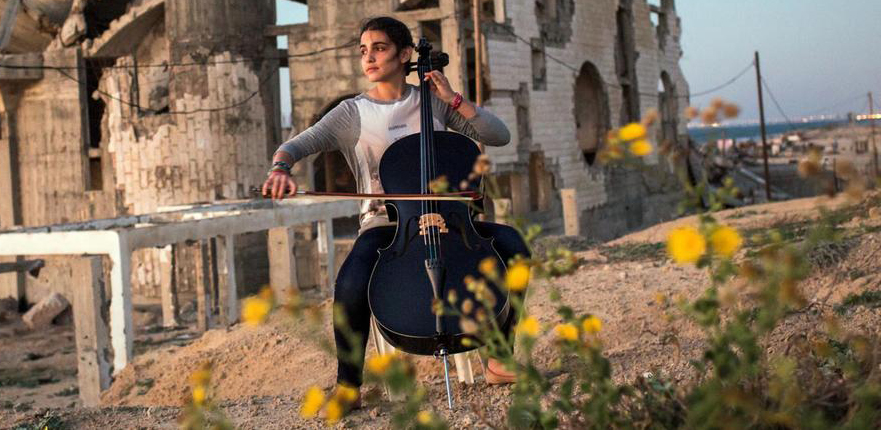‘The sea opens no door before me’. This is how the Palestinian poet Mahmoud Darwish began his poem On A Canaanite Rock at the Dead Sea, and the sense of the line is repeated many times by the subjects of Garry Keane and Andrew McConnell’s documentary, Gaza. A number of participants make mention of the Mediterranean water which forms the third part of a blockade: one side blocked by Israel, one by Egypt, and then, the open expanse of the sea, with Israeli boats prowling the three-mile stretch Palestinians are allowed to fish in.
Many of the people who feature in the film work by the sea or hold an affinity for it, while knowing that the prepossessing sight of the water is a terrible rebuke to their desire for freedom. Keane and McConnell’s camera follows a number of people living and working in Gaza, and the directors have a facility for pinpointing the richest aspects of their personalities. There’s a beyond-charming taxi driver, whose bantering repartee with his passengers is joyous; a young cellist, hoping that she can find a route out of Gaza; a family of forty, a number of the boys hoping to become fisherman; a Bedouin-descendant running fashion shows; a young rapper in a wheelchair trying to perfect his art.
But the film’s depiction of these lives is suspect. Is it possible to make an apolitical film about Gaza? No, it is not: but the directors have really tried.
The omissions are profound and have consequences for the rest of the documentary. For instance, although we hear quick sketches about the lives being led in such straitened circumstances, there’s next to nothing about the ways that citizens in Gaza attempt to organise. One way to explain this absence is simple: the directors may well be reticent to enter into the political territory. But just as there’s no alternative for people living in a twenty-five-by-seven mile stretch of land housing nearly two million people, there’s no way a film about those same people could fail to pick up on the ways resistance is organised. The presence of Hamas and the PFLP are skirted over, and Israel is simply something looming in the background.
This speaks to a profound non-committal attitude on the part of the directors, a centrism of sorts; but centrism won’t stop a bullet, or an airstrike, or the gradual deprivation of Gazan resources. Where Waad-al Kateab and Edward Watts’s For Sama possessed a lacerating intensity in its images (and, not unconnected, clarity and moral bravery in its politics), Gaza’s coy diversions are matched by some bizarre filmmaking choices, most notably a score which begs for emotions the images don’t earn.
Cinema has its own kind of rhetoric, and the directors opt for some gestures here that strike for profundity and instead come off as more than a little fatuous. For example, after a segment following the border protests, the filmmakers record the aftermath: ill-fitted Palestinian ambulances rush through to packed hospitals, the directors capturing the incessant speed and movement this inspires in an impressive act of reportage. Unfortunately, they end this passage with three shots which the film’s language establishes as a metonym for Gaza: the sight of a stunned young girl, out of breath, lying on a hospital bed.
It’s a horrendous error of judgement to present the footage in this way. Even worse is the use of the cellist’s outrage at the perception the rest of the world has of Gaza. She wants people to acknowledge the dreams of Gazans. This is another rhetorical gesture by the filmmakers: it says, ‘that’s what we’re doing with this film’. It’s potentially a potent mission, but in execution, it clearly fails due to the superficiality of Keane and McConnell’s engagement with the subjects and their evasion of the political reality. Gaza is a film which looks a lot like emotional tourism.
